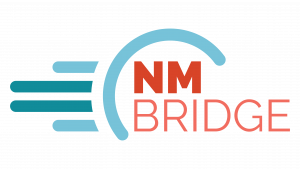Gallup Indian Medical Center
Gallup, New Mexico
Gallup Indian Medical Center | Navajo Area Indian Health Service Facility
Gallup Indian Medical Center (GIMC) is a 99-bed hospital in Gallup, New Mexico (McKinley County), on the border of the Navajo Reservation. Clinical specialties at GIMC include Internal Medicine, Cardiology, Anesthesia, OB/GYN, General Surgery, Orthopedics, Ophthalmology, ENT, Radiology, Pathology, Pediatrics, Psychiatry, Emergency Medicine, and Urology. The workload at Gallup is one of the largest in the Indian Health Service with 250,000 outpatient encounters and 5,800 inpatient admissions annually. GIMC has the largest staff of all Navajo Area IHS facilities. Click here to visit their website.
Opioid use disorder (OUD) and overdose rates disproportionately impact Indigenous communities. Rates of OUD have also been rising faster among Indigenous communities than the general U.S. population. We, at Gallup Indian Medical Center (GIMC), therefore felt that partnering with the New Mexico Bridge Program (NM Bridge) was an important opportunity to address the opioid epidemic in our community.
When assessing needs at GIMC, we knew that there were strong outpatient programs in place for medication assisted treatment (MAT) through our hospital’s outpatient clinics. However, there was a need to improve initiation of MAT and linkage to ongoing care from the emergency department (ED). Through our work with the NM Bridge team, we developed evidence-based pathways for initiation of buprenorphine for treatment of OUD in the ED setting as well as home induction protocols. The expertise provided by the NM Bridge team helped ensure that these pathways are in accordance with current best practices. The NM Bridge team also provided excellent educational opportunities for our physicians, nurses and other staff. Educational sessions focused on both clinical care as well as addressing stigma that can interfere with the care of patients with OUD. Through these efforts, we have seen significant increases in rates of buprenorphine administration and prescription from the ED. When our providers encountered patients with severe fentanyl withdrawal that were complex to manage, we were also able to discuss these challenging cases with the experts at the NM Bridge team. Our engagement with the NM Bridge program has helped ensure that the entire care team has a shared mental model regarding how to effectively treat patients with OUD in a respectful, culturally safe environment.
In the community we serve, alcohol use disorder (AUD) is also a predominant issue. Therefore, our team has worked to strengthen pathways for treatment of AUD alongside our work to strengthen MAT for OUD. The NM Bridge team was very supportive of that being a joint need. In addition to pathways for treatment of OUD, we therefore developed and implemented parallel order sets for naltrexone for AUD as well as referral pathways for linkage to outpatient follow-up.
We have also shared the materials developed at GIMC with other Indian Health Service facilities working to improve pain and addiction at their sites, and hope that the work we have done at GIMC can help be a catalyst for broader, system-wide positive change.
Emily Bartlett, MD
